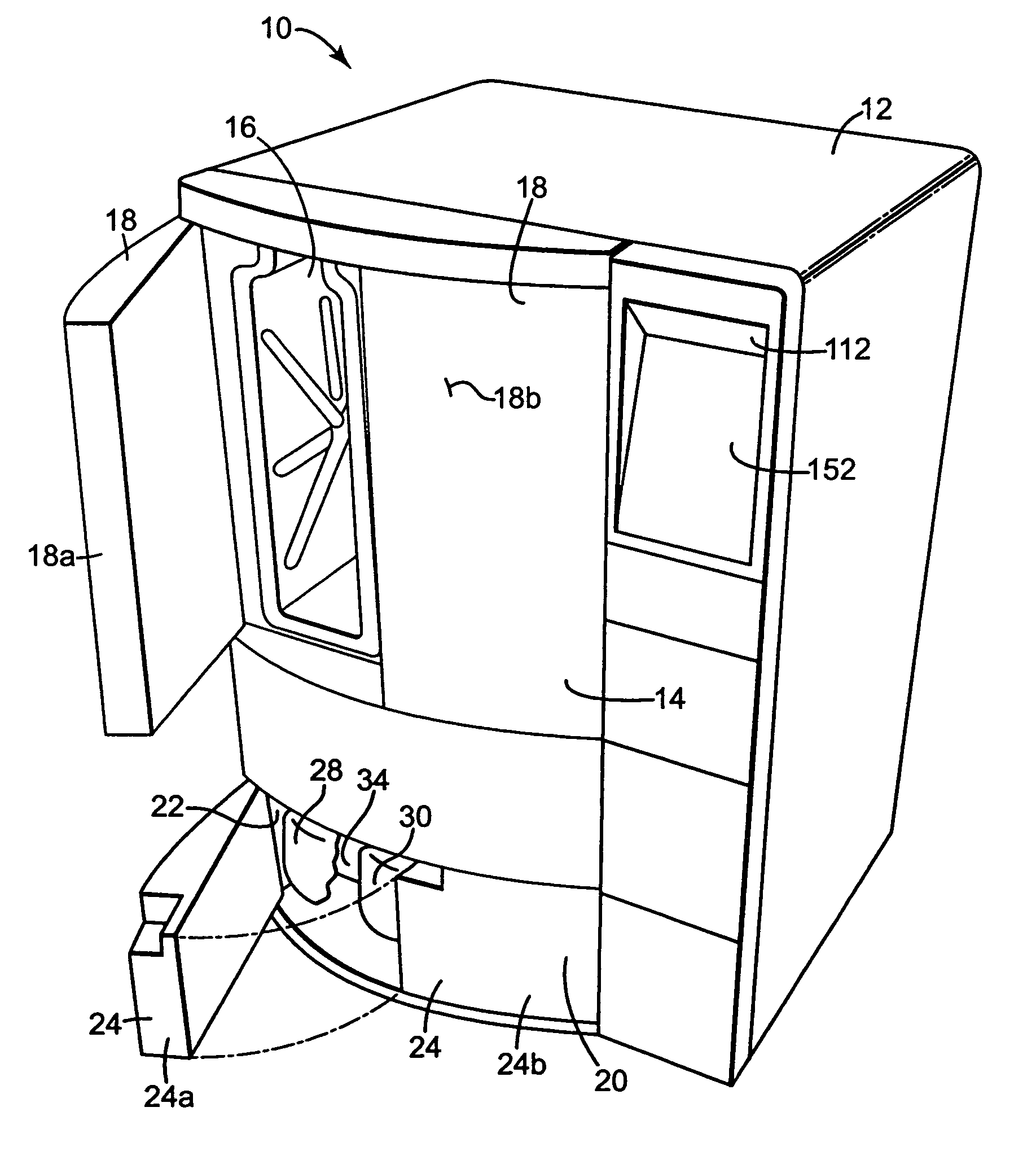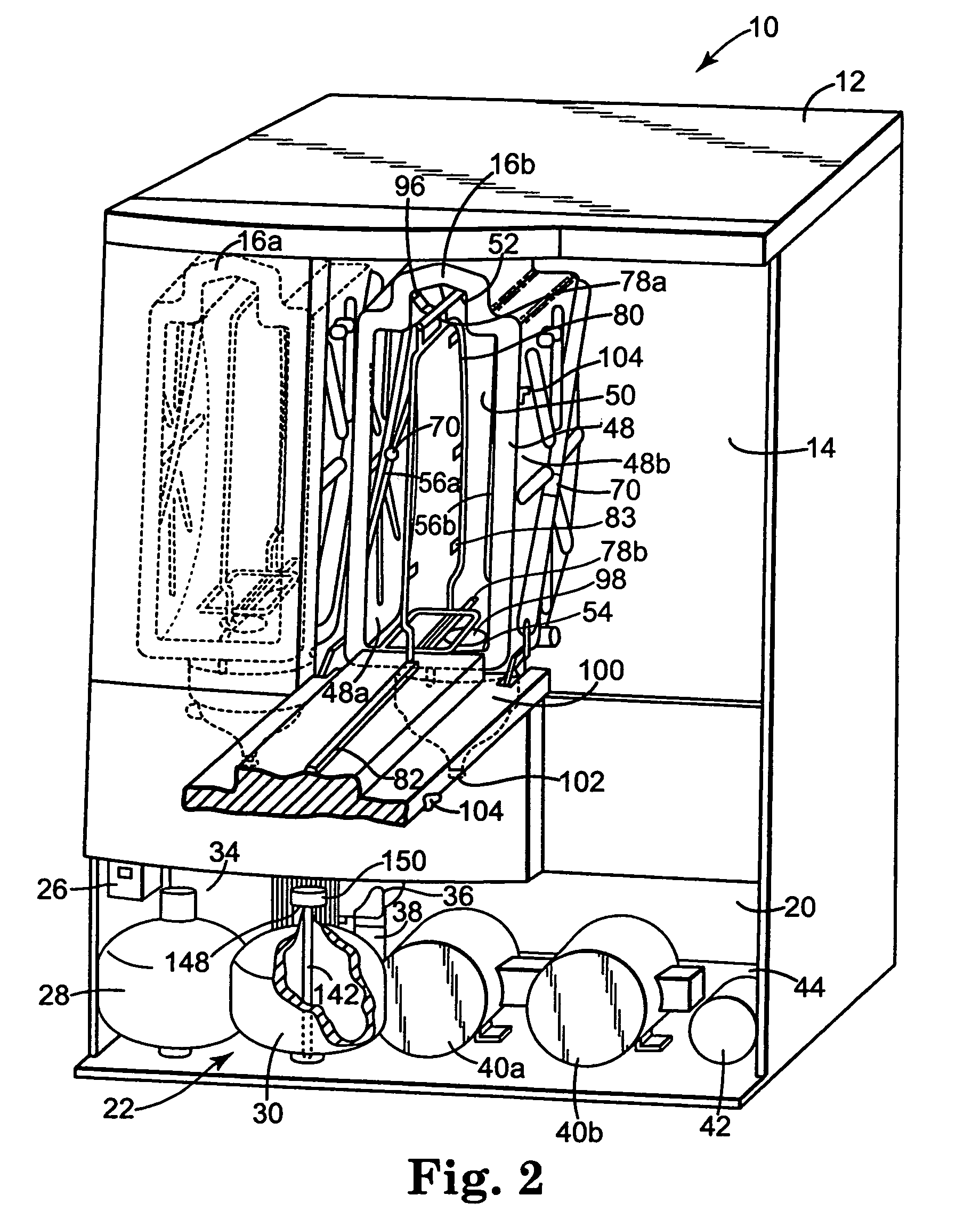Apparatus and method for steam reprocessing flexible endoscopes
a flexible endoscope and apparatus technology, applied in the field of apparatus and method for steam reprocessing flexible endoscopes, can solve the problems of destroying sensitive optical components such as endoscopes, severely curtailing their useful lives, and delicate advanced medical instruments formed of rubber and plastic components with adhesives
- Summary
- Abstract
- Description
- Claims
- Application Information
AI Technical Summary
Benefits of technology
Problems solved by technology
Method used
Image
Examples
Embodiment Construction
[0031]The present invention provides an apparatus, componentry, methodology, and an integrated system for processing or reprocessing medical devices with minimal human intervention to yield a clean, disinfected, decontaminated, or sterilized device. The term “reprocessing” is intended to encompass cleaning, disinfecting, decontaminating, and / or terminally sterilizing medical devices, instruments or apparatus used in an earlier procedure, such as an endoscopic procedure. “Reprocessing” also covers the same or similar steps carried out on new or never-used devices, instruments, or apparatuses, whether these items are intended for one-time or repeated use. The embodiments described below include (or can include) but are not limited to the use of one or more of a liquid for rinsing an endoscope E (or other medical or non-medical device), a liquid for heat-up, a gas for heat-up, a liquid detergent solution for washing, a liquid sterilant, a steam sterilant, a steam-gas mixture sterilant,...
PUM
| Property | Measurement | Unit |
|---|---|---|
| temperatures | aaaaa | aaaaa |
| pressures | aaaaa | aaaaa |
| flexible | aaaaa | aaaaa |
Abstract
Description
Claims
Application Information
 Login to View More
Login to View More - R&D
- Intellectual Property
- Life Sciences
- Materials
- Tech Scout
- Unparalleled Data Quality
- Higher Quality Content
- 60% Fewer Hallucinations
Browse by: Latest US Patents, China's latest patents, Technical Efficacy Thesaurus, Application Domain, Technology Topic, Popular Technical Reports.
© 2025 PatSnap. All rights reserved.Legal|Privacy policy|Modern Slavery Act Transparency Statement|Sitemap|About US| Contact US: help@patsnap.com



